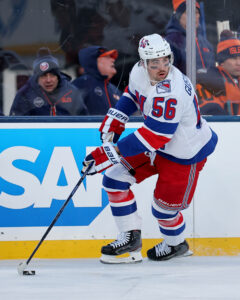The midpoint of the season has sparked a flurry of action across the hockey world. Some players are finally being moved from a slow start to the season, while others are finding their first contracts of the year. The notable moves have been rounded up and captured below:
- Former New York Islanders center Leo Komarov has signed a one-year contract with HC Davos of Switzerland’s National League. The 38-year-old Estonian spent the last two seasons with HIFK of Finland’s Liiga. He scored 23 points in 55 games with the club, but wasn’t able to secure a contract for this season. That will change with a move to Switzerland, marking the eighth professional hockey league that Komarov has played in – on top of tenures in Finland’s Mestis and Liiga, Russia’s KHL, the AHL and NHL, and Sweden’s SHL. He will offer Davos veteran depth.
- Also signing an overseas contract is former Buffalo Sabres goaltender Dustin Tokarski, who has left his professional try-out contract with the AHL’s Grand Rapids Griffins to sign a deal with Lowen Frankfurt of Germany’s DEL. Tokarski made two appearances with Grand Rapids on his try-out, posting one win and a .929 save percentage. He posted a .897 Sv% in 21 AHL games, and a .902 Sv% in six NHL games, in the Carolina Hurricanes’ organization last season. He’ll join Frankfurt for the second-half of the year and could have an open path to the starting role, with all three of Frankfurt’s goaltenders posting sub-.900 Sv% through the first half of the season.
- Hard-hitting Utah Mammoth prospect Tomas Lavoie has been traded in the QMJHL. He will head to the Chicoutimi Saguenéens in exchange for five draft picks, including a first-rounder, headed back to the Cape Breton Eagles. Lavoie was a core piece of the Eagles this season, offering stalwart defense and reliable puck-moving. The former third-round pick has 21 points in 24 games this season and could bring a reliable, shutdown role to a Saguenéens lineup currently leaning on high-octane defenders like Alex Huang.
- Seattle Kraken prospect Alexis Bernier will also head to the Saguenéens in exchange for Leo-Gabriel Gosselin and five draft picks. Bernier is a volume shooter who racked up 14 goals and 46 points in 59 games with the Baie-Comeau Drakkar last season, but hasn’t yet played this year. He could be due for a major breakout after rivaling point-per-game scoring last season, which should only bolster a Saguenéens lineup that has already propped up shoot-first wingers Maxim Massé and Émile Guité. The Saguenéens will go all-in on this season before likely losing Masse, Guite, and many others to pro deals.

